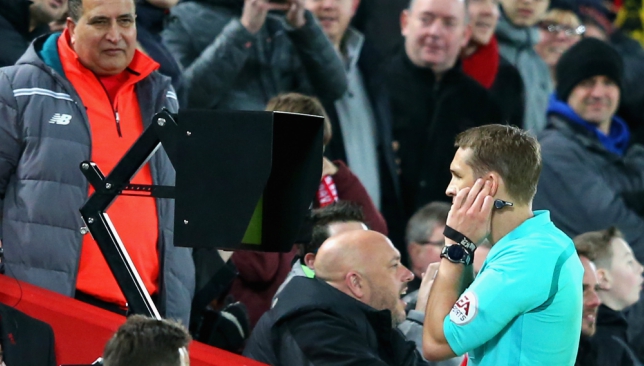
Decisions made 200 miles away from Anfield have dominated the debate about Liverpool’s capitulation in the FA Cup to West Bromwich Albion.
Repeat use of the video assistant referee (VAR) by referee Craig Pawson has led to soul searching about where the national game is headed. Predictability, the usual Luddites have been making the most noise as they vocalise their typical fear of change.
But contrary to base opinion, VAR is not here to ruin football. It will make the ‘Beautiful Game’ purer.
Much of the discord about its utilisation by Pawson was the time taken. There is no doubt the current system is clumsy as referees talk to the hub and run across the pitch to view replays, yet this is mostly a problem of perception.
A study by the International Football Association Board into 800 games in which VAR has been utilised judged that less than one per cent of time was lost to the new system. In contrast, 10 per cent was drained away in free-kicks – the usual gamesmanship about forming walls and retreating the correct distance being to blame.
The key challenge is to improve communication to football supporters about its use.
VAR won’t make officiating error free. Chelsea winger Willian can attest to that with his odd booking for simulation against Norwich, while the Bundesliga’s head of the fledgling system was sacked for bias.
But the Football Association have predicted it will cut the mistake rate in half, from four per cent to two per cent. Friday’s match is a perfect example of its judicious application.
If Pawson had not asked for help, two major wrong decisions would have occurred in the first 10 minutes. Correct calls are always worth the wait.
Football likes to think it stands apart. Yet, variations of VAR have enhanced sports from both codes of rugby to cricket, tennis to the NFL.
Broader use will lead to refinement, then acceptance.
Substitutions, extra time and the back-pass rule were once unwelcome interventions. Soon enough, VAR will join them as inextricable parts of the sport’s fabric.